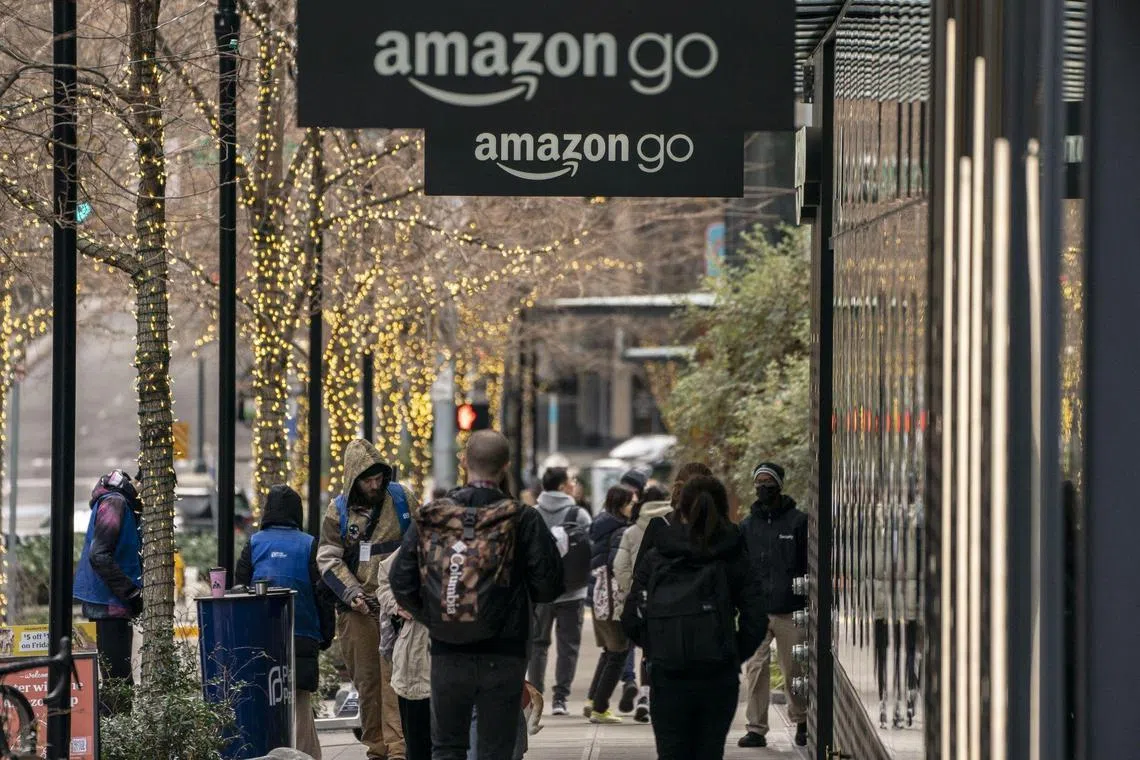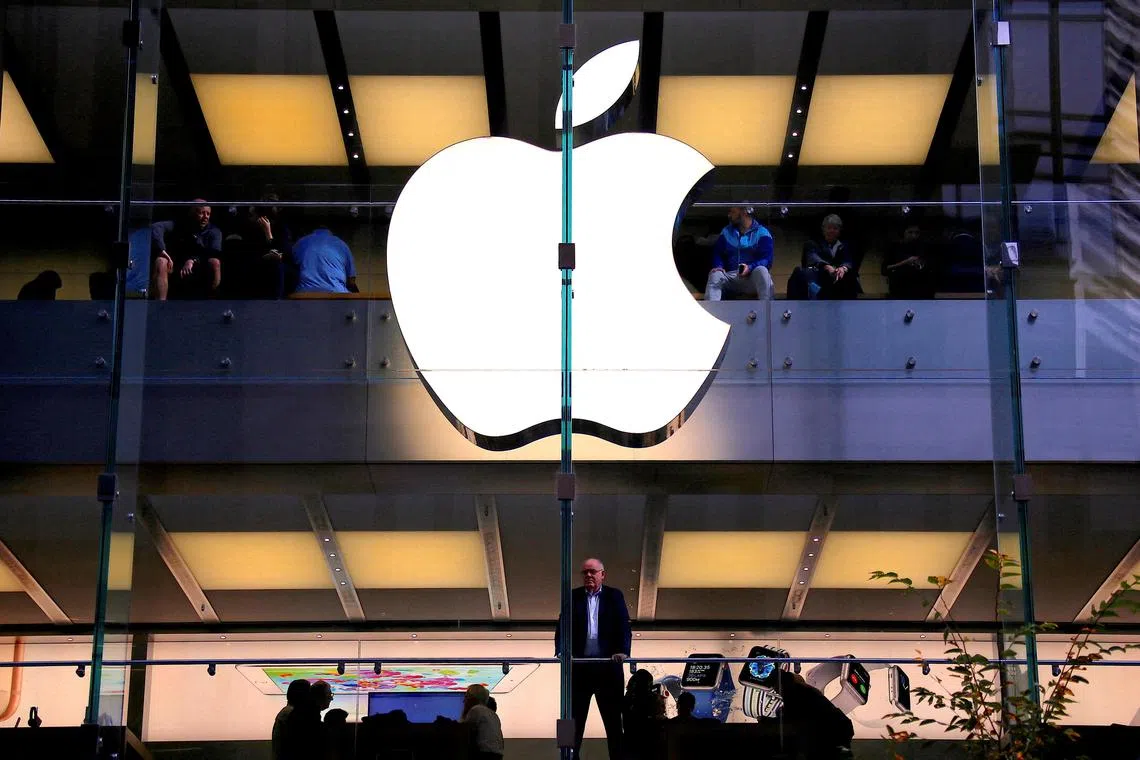Big Tech binged on workers during Covid-19, but is now purging them
Sign up now: Get ST's newsletters delivered to your inbox

Amazon has started its biggest-ever round of jobs cuts a culling that will ultimately affect 18,000 workers around the globe.
PHOTO: BLOOMBERG
Justin Fox
Follow topic:
The layoff announcements coming lately from the chief executives of big technology companies all contain variations on the theme of “we hired too many people during the pandemic”, expressed with varying degrees of contrition.
At one end of the spectrum are Seattle’s Mr Andy Jassy of Amazon.com and Mr Satya Nadella of Microsoft Corp.
Amazon’s layoffs
Microsoft’s Mr Nadella opted for bland corporate speak: “As we saw customers accelerate their digital spend during the pandemic, we’re now seeing them optimise their digital spend to do more with less.”
Down in the San Francisco Bay Area, there was more of a willingness to hint that errors had been made.
“Over the past two years we’ve seen periods of dramatic growth,” wrote Mr Sundar Pichai of Google parent Alphabet. “To match and fuel that growth, we hired for a different economic reality than the one we face today.”
Mr Marc Benioff from Salesforce was even clearer, saying: “As our revenue accelerated through the pandemic, we hired too many people leading into this economic downturn we’re now facing, and I take responsibility for that.”
Then there was Meta Platforms CEO Mark Zuckerberg, who opted to treat his November layoff
Mr Zuckerberg, of course, may have many other things to be contrite about, starting with the 2021 decision to rename Facebook and bet its future on virtual-reality headsets. But, yes, Meta truly did hire a whole lot of people in 2020 and 2021, with headcount up 60 per cent over that period.
For Microsoft, Alphabet, Salesforce and Meta, the combined increase was 35 per cent, or 126,170 jobs.
The layoffs announced so far by these four companies total 41,000, about a third of the jobs they added since 2019. Amazon is on a different employment plane, with most of its workforce labouring not at computers but in warehouses, supermarkets and other elements of what the company calls “field and customer support”. It added 810,000 employees from 2019 to 2021, more than doubling its headcount, and employs more people than any US corporation other than Walmart.
Amazon has announced 18,000 layoffs so far this autumn and winter, the most of any tech company but only 2.2 per cent of its 2019-2021 headcount increase. The company did shed 99,000 employees in the second quarter of 2022 through what it said was mainly attrition of warehouse and logistics workers, but added 21,000 in the third quarter. (Amazon includes employee counts in its quarterly earnings releases; most companies only report the number once a year in their 10-K annual report.)
The 2022-2023 tech layoff total as tallied by Layoffs.fyi, which includes companies in retail, finance, healthcare and crypto, is 219,132, of which 59,448 have been announced this year.
Meanwhile, US employers overall added 4.5 million jobs in 2022, according to the Bureau of Labour Statistics (BLS), with no real sign of a slowdown in the December job numbers.
Full December numbers are not available yet for the industry categories that cover most or all of what Microsoft, Alphabet, Salesforce and Meta do, but these three sectors added 117,000 employees over the first 11 months of 2022, more than they added in 2020 or 2021. (The BLS tries to sort payroll job data by “establishment” rather than company, so the employees of Amazon Web Services, the company’s cloud computing subsidiary, should in theory be counted as well.)
This hiring boom has been going on for a while, but it accelerated over the past three years.
There were signs of an acceleration even before Covid-19 arrived, which casts some light on why tech CEOs thought what they were seeing during the pandemic might represent the new normal.
As at November, these sectors employed almost 171,000 more people in the United States than they would have if they had stuck to the previous decade’s hiring trend. Now it looks as if tech executives are trying to push headcounts back towards where they would have been if not for that heady time when they thought they were in the midst of what Mr Zuckerberg called a “permanent acceleration”.
Permanent acceleration is not really a thing in business. As your company gets bigger, its rate of growth slows. Sure, there can be doldrums followed by revivals, and belief in permanent acceleration is sort of the point of start-up investing, where it works until it does not. But for big, established companies (Meta turns 20 next year; Microsoft will soon be 48), it can lead to fraught situations like the one unfolding now.
Note that I have not mentioned Apple here. It has not announced any layoffs and did not accelerate hiring during the pandemic, with its headcount growing at an annual rate of 6 per cent from 2019 to 2022 (Apple’s fiscal year ends in September, so it has already reported its end-of-year headcount) after posting 8 per cent annual growth over the previous five years.
The same goes for a tech sector that employs even more people than the three shown above, computer systems design and related services.

Apple has not announced any layoffs.
PHOTO: REUTERS
This is the territory of companies such as Accenture, the third-largest employer on the Standard & Poor’s 500 Index, which mostly try to help companies not in the tech industry and other institutions keep up with tech developments (“become the next and best versions of themselves” is how Accenture puts it).
Payroll employment in the sector fell early in the pandemic but recovered quickly in late 2020 and 2021, with hiring settling back in 2022 on a path just below its pre-pandemic trajectory. So far, there have been no indications that this is about to change.
The recently announced tech layoffs are of course painful for the more than 200,000 workers who are getting their notices and having to enter a job market suddenly flooded with other layoff casualties with similar skills and experience. The layoffs may backfire on the companies doing them by damaging employee morale and customer relationships.
They are also, however, clearly a reaction to a hiring boom that got a little out of hand. With other US employers struggling to hire enough people over the past couple of years (there were 3.3 million, or 51 per cent, more reported job openings in November than three years earlier), the situation faced by tech companies is unique.
The “economic downturn we’re now facing”, according to Salesforce’s Mr Benioff, is not a general phenomenon – at least not yet. The risk is that tech companies’ abrupt shift from hiring to firing could help make it one. BLOOMBERG

